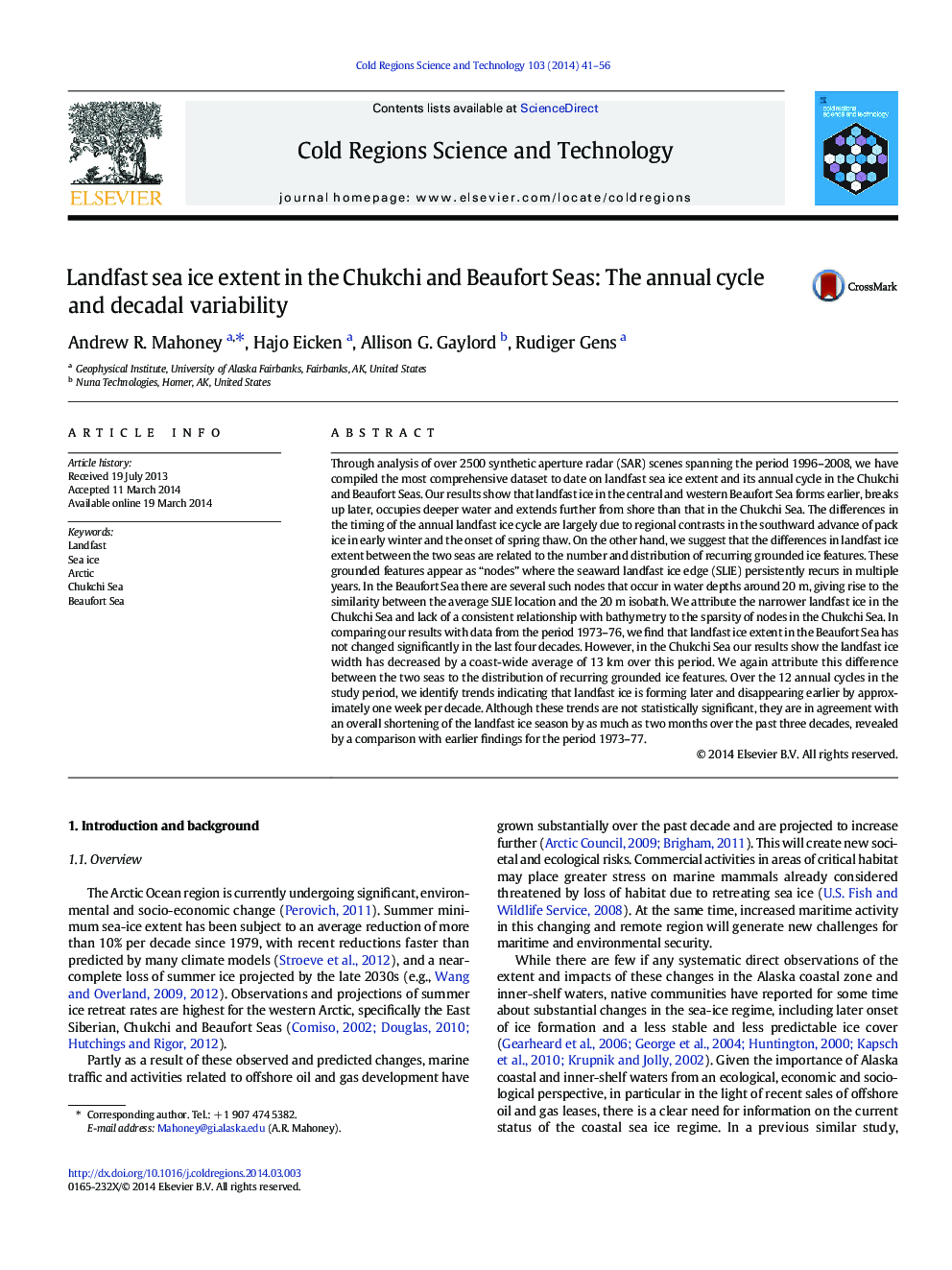| Article ID | Journal | Published Year | Pages | File Type |
|---|---|---|---|---|
| 6426922 | Cold Regions Science and Technology | 2014 | 16 Pages |
â¢Most comprehensive analysis to date of landfast ice in Chukchi and Beaufort Seas for time period 1996 through 2008â¢Landfast ice extent controlled by recurring grounded ice features where presentâ¢Landfast sea ice forming later and breaking-up earlier by approx 1 week/decadeâ¢Chukchi landfast sea ice 13 km narrower on average than during the mid 1970sâ¢No evidence for reduction in the extent of Beaufort Sea landfast ice
Through analysis of over 2500 synthetic aperture radar (SAR) scenes spanning the period 1996-2008, we have compiled the most comprehensive dataset to date on landfast sea ice extent and its annual cycle in the Chukchi and Beaufort Seas. Our results show that landfast ice in the central and western Beaufort Sea forms earlier, breaks up later, occupies deeper water and extends further from shore than that in the Chukchi Sea. The differences in the timing of the annual landfast ice cycle are largely due to regional contrasts in the southward advance of pack ice in early winter and the onset of spring thaw. On the other hand, we suggest that the differences in landfast ice extent between the two seas are related to the number and distribution of recurring grounded ice features. These grounded features appear as “nodes” where the seaward landfast ice edge (SLIE) persistently recurs in multiple years. In the Beaufort Sea there are several such nodes that occur in water depths around 20Â m, giving rise to the similarity between the average SLIE location and the 20Â m isobath. We attribute the narrower landfast ice in the Chukchi Sea and lack of a consistent relationship with bathymetry to the sparsity of nodes in the Chukchi Sea. In comparing our results with data from the period 1973-76, we find that landfast ice extent in the Beaufort Sea has not changed significantly in the last four decades. However, in the Chukchi Sea our results show the landfast ice width has decreased by a coast-wide average of 13Â km over this period. We again attribute this difference between the two seas to the distribution of recurring grounded ice features. Over the 12 annual cycles in the study period, we identify trends indicating that landfast ice is forming later and disappearing earlier by approximately one week per decade. Although these trends are not statistically significant, they are in agreement with an overall shortening of the landfast ice season by as much as two months over the past three decades, revealed by a comparison with earlier findings for the period 1973-77.
